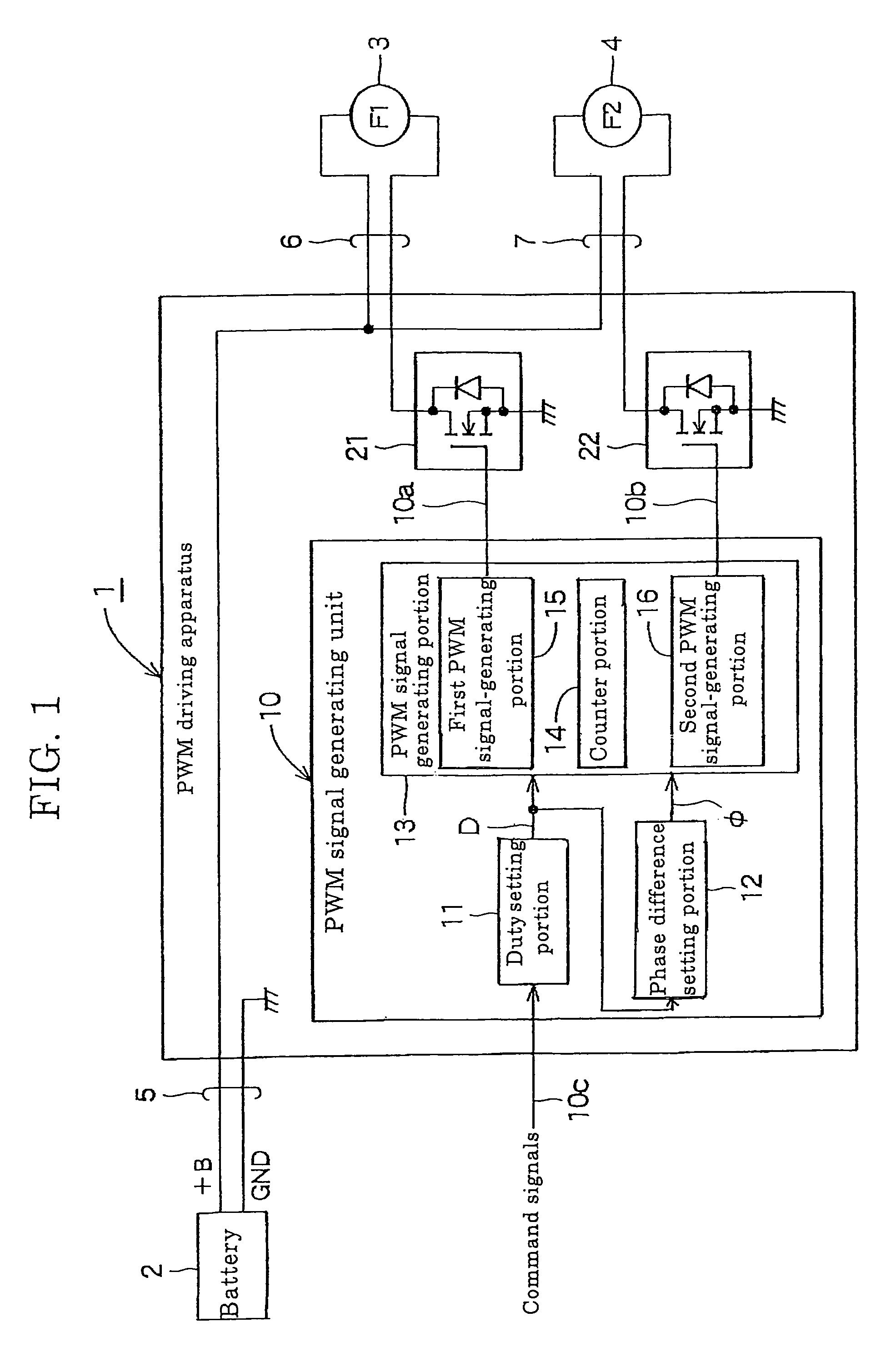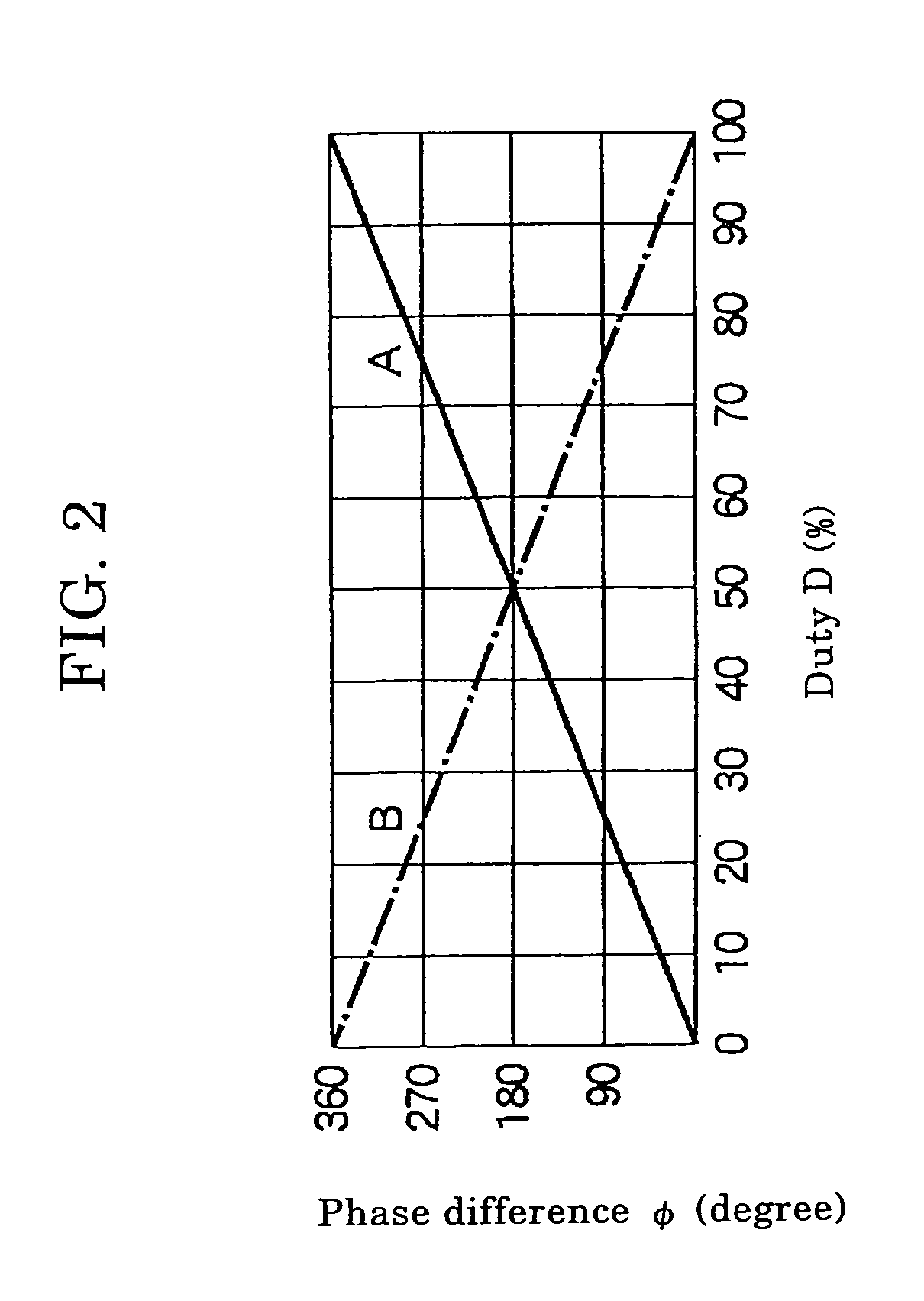PWM driving apparatus
a driving apparatus and driving motor technology, applied in the direction of electric controllers, instruments, ignition automatic control, etc., can solve the problem of fluctuation in the amount of electromagnetic noise generation, and achieve the effect of simplifying the circuit structur
- Summary
- Abstract
- Description
- Claims
- Application Information
AI Technical Summary
Benefits of technology
Problems solved by technology
Method used
Image
Examples
first embodiment
[0023]FIG. 1 is a block diagram showing a PWM driving apparatus according to the present invention. The PWM driving apparatus 1 shown in FIG. 1 receives supplying of an electric power from a battery 2 mounted in a vehicle and operates two motor fans 3, 4 (for example, a fan F1 for cooling a radiator and a fan F2 for cooling a condenser) as first and second loads, respectively, under a PWM control. In addition, reference numeral 5 denotes a battery power-supplying cable, and reference numerals 6, 7 denote power-supplying cables for the respective motor fans. Reference numeral +B denotes an anode of the battery 2, and reference numeral GND denotes a cathode (ground) of the battery 2.
[0024]This PWM driving apparatus 1 includes a PWM signal generating unit 10 which generates first PWM signals 10a and second PWM signals 10b based on command signals 10c, a first load-driving circuit 21 which performs switching of the electric power to be supplied to the first motor fan 3 on the basis of t...
second embodiment
[0040]FIG. 4 is a block diagram of a PWM driving apparatus according to the present invention. The PWM driving apparatus 1A shown in FIG. 4 receives the supplying of the electric power from a battery 2 mounted in the vehicle and operates two motor fans 3, 4 (for example, a fan F1 for cooling the radiator and a fan F2 for cooling the condenser) as first and second loads, respectively, under the PWM control. Meanwhile, reference numeral 5 denotes a batter-power supplying cable, and reference numerals 6 and 7 denote power-supplying cables for the motor fans. Reference numeral +B denotes an anode of the battery 2, and reference numeral GND denotes a cathode (ground) of the battery 2.
[0041]This PWM driving apparatus 1A includes a PWM signal generating unit 30 which generates first PWM signals 30a and second PWM signals 30b based on command signals 30c, a first load-driving circuit 21 which performs switching of the electric power to be supplied to the first motor fan 3 on the basis of th...
PUM
 Login to View More
Login to View More Abstract
Description
Claims
Application Information
 Login to View More
Login to View More - R&D
- Intellectual Property
- Life Sciences
- Materials
- Tech Scout
- Unparalleled Data Quality
- Higher Quality Content
- 60% Fewer Hallucinations
Browse by: Latest US Patents, China's latest patents, Technical Efficacy Thesaurus, Application Domain, Technology Topic, Popular Technical Reports.
© 2025 PatSnap. All rights reserved.Legal|Privacy policy|Modern Slavery Act Transparency Statement|Sitemap|About US| Contact US: help@patsnap.com



